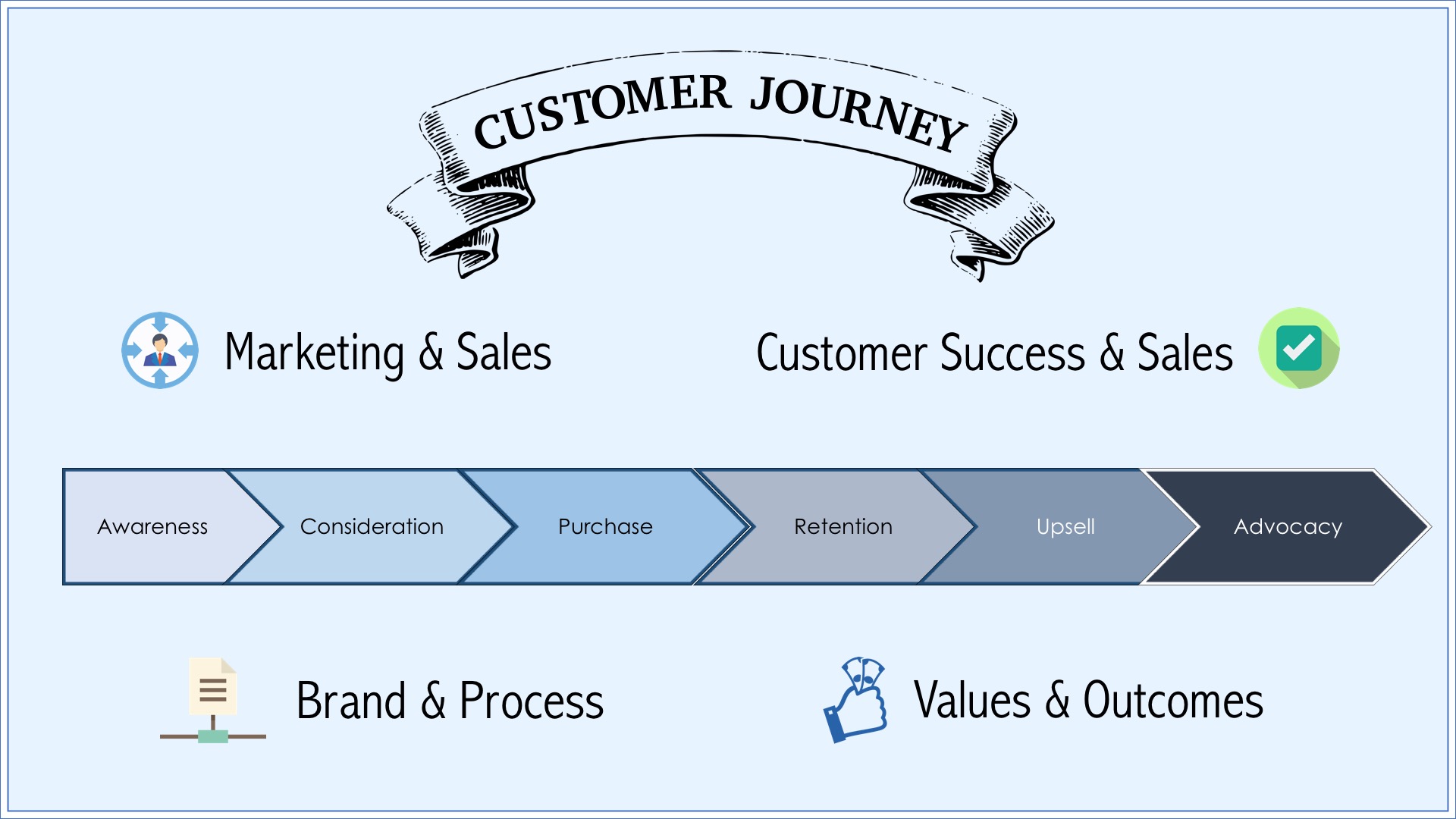A great definition of “customer success” (CS) is stated concisely by Lincoln Murphy – “the process by which your customers achieve their desired business outcomes through their interactions with your company.” What this means in practical terms is that customer success managers manage relationships with your customers, optimize their accounts and work with them to create best practices. The byproduct of doing this process well is a satisfied customer that is more likely to renew its contract, be open to product additions via upsells and cross-sells and become an advocate for your company and product.
So where did CS come from? Is it simply a new buzzword, or an expansion on the post-sale revenue model?
This is the question of the moment as various businesses and industries try to figure out from where this new function emerged. The origin of customer success can be traced to account management, a role that arose as a mainstream function after the SaaS business model gained prevalence. The CS role amalgamates aspects from nearly all customer-facing functions including support, training, account management and professional services to form a set of responsibilities that is uniquely its own. While it may sound like nothing much has changed in how we conduct business and maintain relationships with our customers, this is not the case.
What has changed is the emergence of the belief that all customers require successful business outcomes that go beyond a successful deployment of the product and consumption of services. If customers don’t feel they’re completely satisfied and that their provider is going above and beyond, they’ll simply switch offerings, especially if the opportunity cost is low if it’s not an application with extensive set-up effort required. The subscription economy has ensured that the CS department gets deserved recognition for efforts towards customer retention and expansion, which had heretofore been masked by an overwhelming obsession with new account acquisition.

If a company acquires a new account, it means nothing if it churns quickly, since the lifetime value (LTV) from the account won’t be harvested. In a subscription model, customer accounts need to be renewed after a certain time period (usually a year). As a result, there is immense pressure to continuously demonstrate value because the immediate consequence is churn and a direct loss of revenue that occurs under your purview. Customer success may owe its rise to SaaS companies, but any company that wants to grow by leveraging its existing customer base should implement CS practices.
Transcending subscription
How does customer success function outside of the subscription economy? Nearly every company in the world swears by measuring “customer happiness,” but efforts in this regard are often limited to customer satisfaction surveys. More and more, companies lean on NPS scores to assess customer sentiment and even display NPS scores as a statement of how customer-friendly they are. The question then becomes: is NPS an accurate measure of customer sentiment and, more importantly, can it lead to customer success? Unfortunately, assessing whether a customer is achieving its business goals through the use of your product or service goes far beyond a one-question survey of likelihood to recommend you to a friend or colleague.

Customer success needs to be a company-wide philosophy that instills the mindset of constantly delivering value to the customer into every function and role. When implemented in this manner, the effects of customer success on your business and bottom line can be phenomenal. Whether you have a subscription, transactional or services model, growth can occur most consistently with the implementation of customer success. New customers will buy more from a company that is proactively delivering value to existing customers. Customer success KPIs should revolve around measuring value, rather than just sentiment.
When customer acquisition goes wrong
We all know, but perhaps seldom acknowledge, that there’s an overwhelming emphasis on new customer acquisition. Marketing has become an extremely powerful vehicle for new growth. CEOs feel the pressure of showing new logos to the board every quarter in order to mark progress. This phenomenon results in an increased focus on driving into new markets and delivering a healthy pipeline.
The key here is to not forget that when a lead becomes a customer, a lot of effort goes into ensuring the customer is successful and remains a customer for the long haul. If there isn’t an emphasis on retention, there’s a big revenue opportunity that is being left by the wayside. The 80-20 principle applies here – 80 percent of your revenue can be harvested from 20 percent of your existing accounts. If this mindset were factored into the equation when planning where to allocate budgets, CS departments would expand rapidly.
Of course, the right customer acquisition is important. If marketing and sales target the wrong demographics, it puts a lot of pressure on the CS organization to deliver on unreasonable expectations. What’s not the right strategy is having marketing teams lead customer advocacy. Customer advocacy is linked to retention, upsell, referrals and social media testimonials. Customer success should take the lead on all customer interactions after a deal is signed. Sales and marketing never get intimate with a customer to the level that CS does. They view customers as different segments and populating the pipeline will always be a priority, whereas CSMs develop an individual relationship with each customer.
Moving forward with CS
Customer success professionals’ job is to know when they can transform a customer experience into an upsell opportunity, referral or a reference opportunity. They have the most one-on-one interactions with customers and know whether or not it’s a good time to ask customers to be in a case study or to become a sales reference.
Despite the fact that often CS departments are understaffed and have abysmal budgets in comparison to Sales and Marketing, the growth in CS shows that it is rapidly coming into its own as an established function with direct benefits to revenue. The key? Don’t disregard customer success in favor of new customer acquisition.
Shreesha Ramdas is the CEO and co-founder of Strikedeck. Previously, he was the GM of the Marketing Cloud at CallidusCloud, co-founder at LeadFormix (acquired by CallidusCloud) and OuterJoin and general manager at Yodlee. Prior to that, he led teams in sales and marketing at Catalytic Software, MW2 Consulting and Tata. Shreesha advises several startups on marketing and growth hacking. You can find Shreesha on Twitter.
